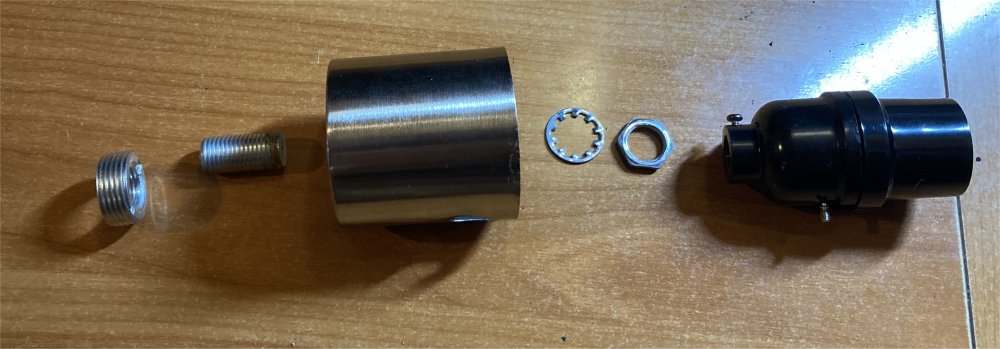For the second time this autumn, I found myself needing to repair a floor lamp at Nogglestead.
In the first instance, the parlor lamp which has a main upwards pointing light and a downwards pointing reading light failed as its single switch, up by the top lamp, bent or something and was touching something else which made the metal turn knob hot to the touch (not, fortunately, electrified). It took me a couple of trips to Lowes, which has a small section of basic wiring, sockets, and switches for lamps. I made this a little difficult on myself by not realizing the difference between a three-way socket and a three-terminal socket. One handles the bulbs that change the brightness, and the second is a socket whose switch controls the two different bulbs. Well, I learned something, but I bought a new floor lamp while the ordered three terminal socket came via that long-unused online store.
But I fixed the lamp anyway, which was nice because I am thinking about rearranging the living room upstairs after the holidays so I can read books while listening to records, and I planned to use the former parlor floor lamp there.
But! The floor lamp beside the reading chairs downstairs had an issue. Its plastic socket cover, which anchored the socket to the tube, broke. So the lamp and its heavy glass shade were almost freely swinging. My beautiful wife mentioned it was loose, but that probably meant it was only partially broken at that time, but one evening, it broke completely and was not attached any longer.
I took it apart and this was the assembly:

Basically, a hollow stud bolt which has threads at both ends and threads inside bolts into the tube. Another stud bolt goes into this and through the housing that holds the shade. Another nut and washer hold the housing tightly to the tube. And the socket housing fits onto the smaller stud bolt (and the socket itself goes into the plastic housing where the wire connections to the socket will be kept, hopefully, safe).
Except: The stud bolt does not fit into the commodity socket. It’s not standard. The bolt is too large.
Were it too small, I could have cheated with some tape on the threads. Actually, it looks like it has a set screw But to fix this, I would have to special order a different pair of stud bolts. If they’re available. If I could measure the sizes I would need, but I don’t have any calipers, and I checked Lowes’ Web site for pricing. And let’s just say that’s not in the cards for the nonce.
So most of it will go into recycling and whatnot. And apparently I have even more old lamp parts to collect in my garage.
Fortunately, though, I have light to read from the spare lamp I had from the parlor. Which did have a standard size bolt to connect it to the replacement socket.


